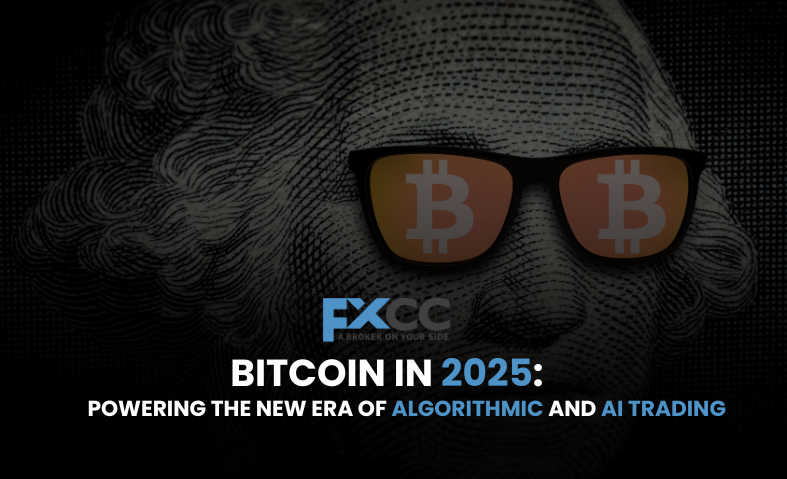The year 2025 marks a pivotal moment for Bitcoin, not just as a store of value or a medium of exchange, but as the foundational layer powering a sophisticated new era of algorithmic and Artificial Intelligence (AI) driven trading. The once wild west of crypto markets is evolving, driven by technological advancements that are making trading more efficient, precise, and accessible. This integration of Bitcoin’s robust blockchain with the analytical power of AI is setting the stage for unprecedented market dynamics.
The Rise of Algorithmic Trading in Crypto
Algorithmic trading is no stranger to traditional finance, but its adoption in the cryptocurrency sphere has accelerated dramatically. In 2025, these automated systems, designed to execute trades based on predefined rules and market data, are becoming the backbone of crypto trading. They eliminate human emotion, respond to market shifts with lightning speed, and can process vast quantities of data that would overwhelm even the most seasoned human trader. From simple trend-following strategies to complex arbitrage opportunities across multiple exchanges, algorithms are tirelessly working 24/7, optimizing entries and exits, and managing risk with a level of precision previously unimaginable for the average investor. This widespread adoption is enhancing market liquidity and tightening spreads, leading to a more mature and efficient trading environment.
AI: The Brains Behind the Bots
While algorithms provide the framework, Artificial Intelligence provides the intelligence. In 2025, AI’s role in crypto trading has moved beyond basic data analysis to predictive modeling, sentiment analysis, and adaptive learning. AI-powered trading bots can now analyze billions of data points in real-time, including price charts, on-chain metrics, regulatory news, and even social media sentiment. This allows them to forecast market movements with remarkable accuracy. Machine learning models, particularly deep learning architectures like LSTMs, are adept at identifying subtle patterns and dependencies in volatile Bitcoin price data. Furthermore, AI is increasingly employed in risk management, dynamically adjusting position sizes and stop-loss orders based on live market conditions, significantly reducing potential losses and improving overall portfolio performance.

Bitcoin’s Core Strength: Security and Scalability
Bitcoin’s inherent strengths—it’s decentralized nature, immutable ledger, and robust security—make it an ideal asset for this AI-driven revolution. As the bedrock of the crypto ecosystem, Bitcoin provides the necessary trust and transparency for automated systems to operate confidently. While scalability has historically been a point of contention for Bitcoin, 2025 has seen significant advancements in Layer 2 solutions such as the Lightning Network, Stacks, and Liquid Network. These innovations enable faster, cheaper transactions off the main blockchain, making Bitcoin more viable for high-frequency trading and micro-transactions that are characteristic of algorithmic strategies. This increased efficiency allows AI bots to execute a higher volume of trades without encountering network congestion or prohibitive fees, further enhancing their profitability and utility.
The Evolving Regulatory Landscape
As algorithmic and AI trading become more prevalent, the regulatory landscape is also adapting. In 2025, many jurisdictions are moving towards clearer guidelines for digital assets, recognizing the need to balance innovation with investor protection. Regulators are increasingly leveraging AI themselves to monitor blockchain transactions, detect suspicious activities, and ensure compliance with anti-money laundering (AML) and know-your-customer (KYC) policies. This shift towards a more defined regulatory framework provides greater certainty for institutional players and encourages wider adoption of AI-driven trading strategies, further legitimizing the integration of cutting-edge technology with the world’s leading cryptocurrency.

Challenges and the Path Forward
Despite the immense potential, challenges remain. The risk of “overfitting,” where AI models become too tailored to past market conditions and fail to adapt to new, unforeseen events, is a constant concern. Moreover, the emergence of coordinated botnets raises ethical questions and the potential for market manipulation. However, the industry is responding with increased transparency, with some exchanges publishing audit reports of their trading algorithms and forming AI ethics committees. The continuous evolution of AI, coupled with ongoing advancements in blockchain technology and a maturing regulatory environment, suggests a future where Bitcoin stands at the forefront of a highly sophisticated, technologically advanced financial landscape.
The bottom line is that Bitcoin, empowered by algorithmic and AI trading, is not just participating in the new era of finance; it is actively shaping it, transforming how we perceive and interact with digital assets.


